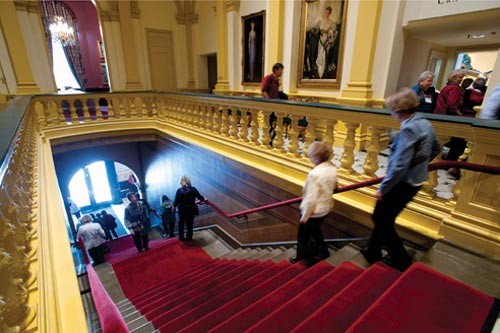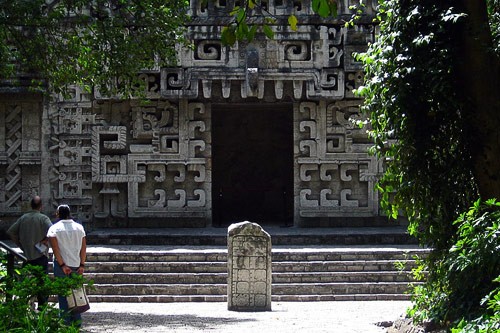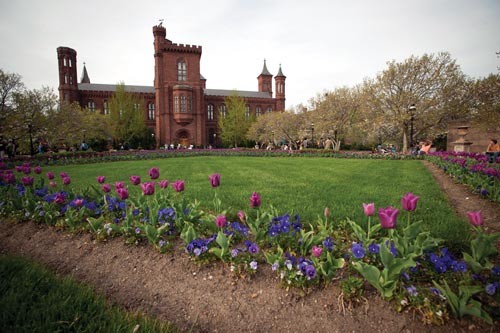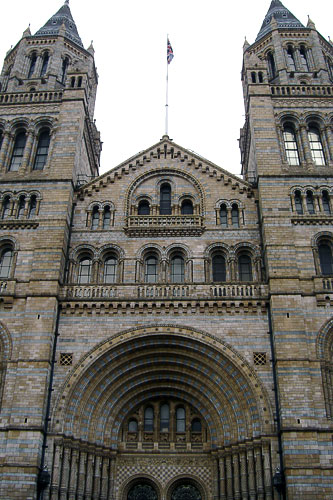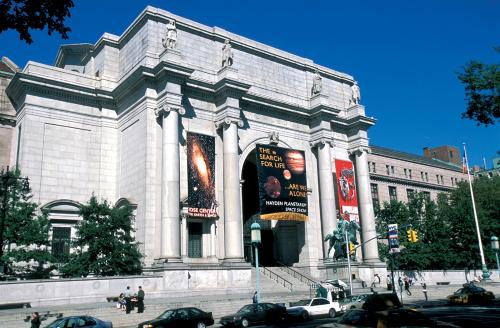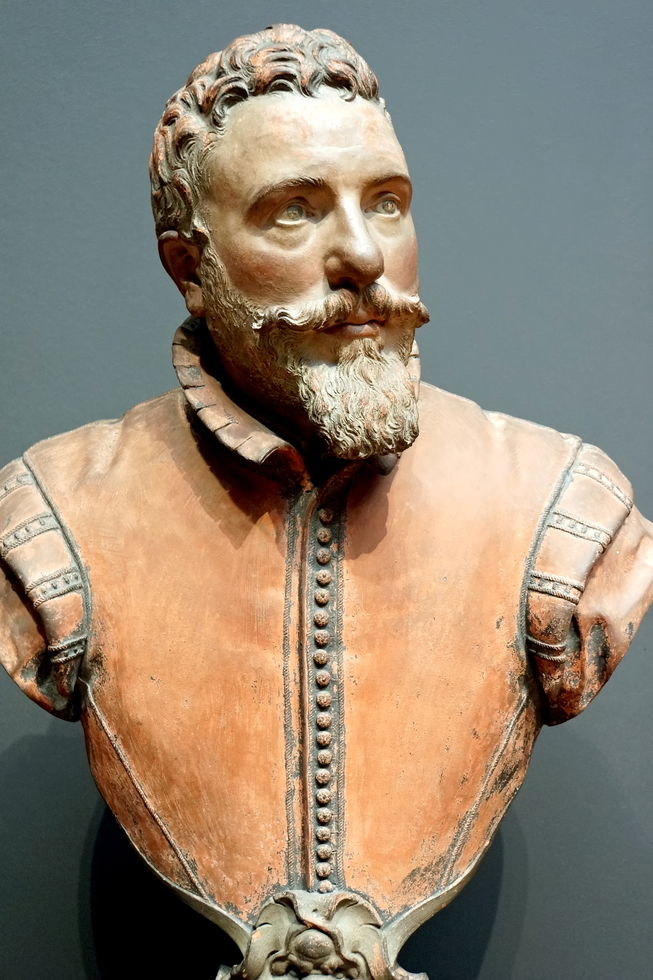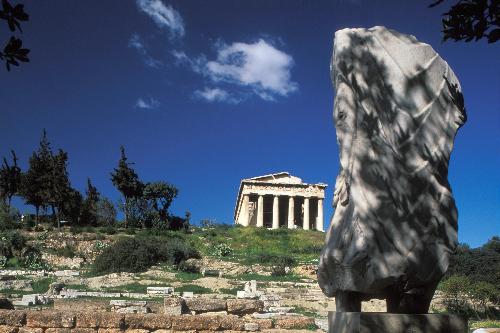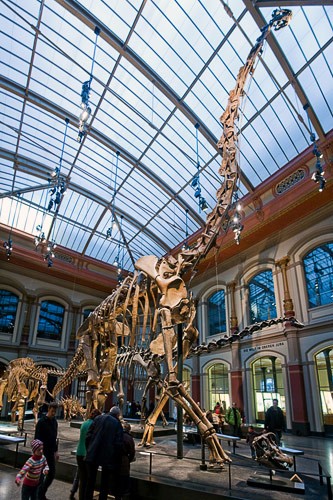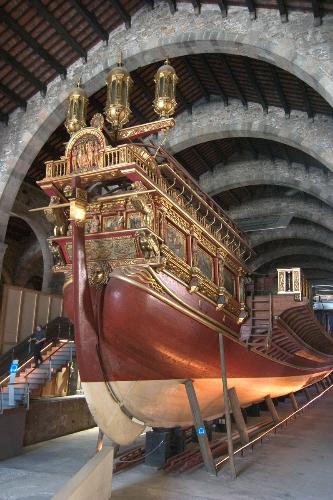Best Cities for Museums: 10 Essential Spots
By Charis Atlas Heelan
Breathe in culture, history, and science at some of the world's most inviting non-art museums in destinations at home and abroad. From evolution to technology, sex to sport, there is a museum that is sure to strike a chord with every traveler and seeker of knowledge.
Photo Caption: The Renwick Gallery of the Smithsonian American Art Museum in Washington, D.C.
Photo Caption: The Renwick Gallery of the Smithsonian American Art Museum in Washington, D.C.
Mexico City, Mexico
This capital boasts over 150 museums, so it is doubtful that even the locals have visited them all. In addition to many sensational art collections, take a few days to discover the heritage, culture, and history of our southern neighbours.
Where to Go: Museo Nacional de Antropología (www.mna.inah.gob.mx) is considered one of the world's finest archaeological museums with an incredible display of Olmec, Mayan and Aztec relics; the Medicine Historical Museum housed in the historic Inquisition Palace displays medical practices, instruments, and ancient to contemporary healing methods; Museo del Zapato (Shoe Museum) has over 7,500 pairs on display (entry is free), Museo de la Caricatura-Comic Museum; the Mexico City Museum (free); and Frida Kahlo's House (Casa Azul) (http://www.museofridakahlo.org.mx) with its interesting collection of the artist's personal affects set in a quaint colonial home, are just a few museums worth your time.
Photo Caption: Museo Nacional de Antropología e Historia in Mexico City. Photo by Christian González Verón/Flickr.com.
Where to Go: Museo Nacional de Antropología (www.mna.inah.gob.mx) is considered one of the world's finest archaeological museums with an incredible display of Olmec, Mayan and Aztec relics; the Medicine Historical Museum housed in the historic Inquisition Palace displays medical practices, instruments, and ancient to contemporary healing methods; Museo del Zapato (Shoe Museum) has over 7,500 pairs on display (entry is free), Museo de la Caricatura-Comic Museum; the Mexico City Museum (free); and Frida Kahlo's House (Casa Azul) (http://www.museofridakahlo.org.mx) with its interesting collection of the artist's personal affects set in a quaint colonial home, are just a few museums worth your time.
Photo Caption: Museo Nacional de Antropología e Historia in Mexico City. Photo by Christian González Verón/Flickr.com.
Washington, D.C.
America's gift to lovers of science and history must be the city of Washington, D.C., and more specifically its incredible variety of institutions and museums.
Where to Go: The Smithsonian Institute (www.smithsonian.org). Nowhere is the history of mankind and its discoveries and achievements on better display than here in the nation's capital, where the Smithsonian is housed in 19 buildings, plus a zoo and research centers. Highlights include the Air and Space Museum, Natural History Museum, American Indian Museum and the American History Museum. General entry is free for all Smithsonian museums. Also in D.C., visit the Holocaust Memorial Museum (www.ushmm.org); Museum of Crime and Punishment (www.crimemuseum.org); or the International Spy Museum (www.spymuseum.org), to name a few.
Photo Caption: The Smithsonian Information Center, also known as "The Castle," in Washington, D.C.
Where to Go: The Smithsonian Institute (www.smithsonian.org). Nowhere is the history of mankind and its discoveries and achievements on better display than here in the nation's capital, where the Smithsonian is housed in 19 buildings, plus a zoo and research centers. Highlights include the Air and Space Museum, Natural History Museum, American Indian Museum and the American History Museum. General entry is free for all Smithsonian museums. Also in D.C., visit the Holocaust Memorial Museum (www.ushmm.org); Museum of Crime and Punishment (www.crimemuseum.org); or the International Spy Museum (www.spymuseum.org), to name a few.
Photo Caption: The Smithsonian Information Center, also known as "The Castle," in Washington, D.C.
London, England
With so many of the world's greatest historical and scientific discoveries emanating from the British Empire, it is only fitting that London is home to some of the world's most extensive and celebrated historical collections. There seems to be a museum dedicated to everything from banking to football, war to dentistry. There's even a museum of gardening history, cricket, music, Sherlock Holmes and the postal service.
Where to Go: London's Natural History Museum (www.nhm.ac.uk), including the Darwin Centre, is located in South Kensington (South Kensington station) and is one of the finest collection of historical data, displays and exhibits in the world. Choose from over 30 permanent galleries, including a large selection of dinosaurs, the Cocoon exhibit, Earthquakes and Volcanoes, the Wildlife Garden, Mammals, and the Earth Hall. Entry is free, but there is a charge for some temporary exhibitions. For an A-Z of more than 200 London Museums, visit www.londonnet.co.uk/ln/guide/about/museums.html.
Photo Caption: London's Natural History Museum. Photo by Caroline Rankin/Frommers.com Community
Where to Go: London's Natural History Museum (www.nhm.ac.uk), including the Darwin Centre, is located in South Kensington (South Kensington station) and is one of the finest collection of historical data, displays and exhibits in the world. Choose from over 30 permanent galleries, including a large selection of dinosaurs, the Cocoon exhibit, Earthquakes and Volcanoes, the Wildlife Garden, Mammals, and the Earth Hall. Entry is free, but there is a charge for some temporary exhibitions. For an A-Z of more than 200 London Museums, visit www.londonnet.co.uk/ln/guide/about/museums.html.
Photo Caption: London's Natural History Museum. Photo by Caroline Rankin/Frommers.com Community
New York City
With so much incredible art on display, it is sometimes easy to overlook the Big Apple's other sensational museum collections, but visitors to New York will love its historical collections.
Where to Go: American Museum of Natural History (www.amnh.org) is home to more than 32 million artefacts displayed over 45 museum halls and the Rose Center for Earth and Space. Kids especially love the giant whale, the gigantic dinosaurs, and a menagerie of animals in dioramas. It's also well worth a visit to the Ellis Island Immigration Museum (www.ellisisland.org): the Intrepid Sea, Air and Space Museum (www.intrepidmuseum.org); the Lower East Side Tenement Museum (www.tenement.org); and the Museum of Jewish Heritage (www.mjhnyc.org).
Photo Caption: Exterior of the American Museum of Natural History in New York City.
Where to Go: American Museum of Natural History (www.amnh.org) is home to more than 32 million artefacts displayed over 45 museum halls and the Rose Center for Earth and Space. Kids especially love the giant whale, the gigantic dinosaurs, and a menagerie of animals in dioramas. It's also well worth a visit to the Ellis Island Immigration Museum (www.ellisisland.org): the Intrepid Sea, Air and Space Museum (www.intrepidmuseum.org); the Lower East Side Tenement Museum (www.tenement.org); and the Museum of Jewish Heritage (www.mjhnyc.org).
Photo Caption: Exterior of the American Museum of Natural History in New York City.
Amsterdam, The Netherlands
Amsterdam itself sometimes feels like a museum, with streets, canals, and houses that have stood mostly unchanged since its rise in the 17th Century. But the city is very much alive, and natives and newcomers alike take advantage of the wealth of art and cultural artifacts that it houses in some of the world's most renown museums.
Where to Go: The Van Gogh Museum (http://www.vangoghmuseum.nl/vgm/index.jsp) has the world's largest collection of paintings by Vincent Van Gogh in a modern space that displays the artist's development and decline. The Rijksmuseum (https://www.rijksmuseum.nl/en) reopened in 2014 after a ten-year renovation, and now visitors can again enjoy Dutch and world masterpieces, including Rembrandt's famed “The Night Watch.” There is a unique poignancy in the Anne Frank House (http://www.annefrank.org/en/Museum/), a museum made of the preserved quarters and displayed personal objects of Anne Frank and her family, from their years spent in hiding from the Nazis. Visitors who prefer contemporary art can find examples of groundbreaking and whimsical design at the Stedelijk Museum Amsterdam (http://www.stedelijk.nl/en).
Photo Caption: “Bust of a Man” by Hendrik de Keyser, 1606, from the newly renovated Rijksmuseum in Amsterdam. Photo by Dennis Jarvis/Flickr.com.
Where to Go: The Van Gogh Museum (http://www.vangoghmuseum.nl/vgm/index.jsp) has the world's largest collection of paintings by Vincent Van Gogh in a modern space that displays the artist's development and decline. The Rijksmuseum (https://www.rijksmuseum.nl/en) reopened in 2014 after a ten-year renovation, and now visitors can again enjoy Dutch and world masterpieces, including Rembrandt's famed “The Night Watch.” There is a unique poignancy in the Anne Frank House (http://www.annefrank.org/en/Museum/), a museum made of the preserved quarters and displayed personal objects of Anne Frank and her family, from their years spent in hiding from the Nazis. Visitors who prefer contemporary art can find examples of groundbreaking and whimsical design at the Stedelijk Museum Amsterdam (http://www.stedelijk.nl/en).
Photo Caption: “Bust of a Man” by Hendrik de Keyser, 1606, from the newly renovated Rijksmuseum in Amsterdam. Photo by Dennis Jarvis/Flickr.com.
Athens, Greece
Athens is like one large historic relic that just happens to also be a bustling modern city. With the classical Parthenon looking down upon it, you'll get your best dose of history outdoors in Athens but for additional historic experiences, visit one or more of its specialized museums.
Where to Go: The National Archaeological Museum (www.namuseum.gr) is the most extensive collection of Ancient Greek artifacts in the world. There is also the Athens Railway Museum; the Byzantine and Christian Museum (http://www.byzantinemuseum.gr/en/); The Hellenic Maritime Museum (www.greece.org/poseidon/work/museums/hmm); Goulandris Museum of Natural History (www.gnhm.gr); Museum of Telecommunications; and the Museum of the Ancient Agora (http://odysseus.culture.gr/h/1/eh151.jsp?obj_id=3290). Don't miss archaeological exhibits underground at local subway stations too.
Photo Caption: Stone with Agora temple in the background, Athens.
Where to Go: The National Archaeological Museum (www.namuseum.gr) is the most extensive collection of Ancient Greek artifacts in the world. There is also the Athens Railway Museum; the Byzantine and Christian Museum (http://www.byzantinemuseum.gr/en/); The Hellenic Maritime Museum (www.greece.org/poseidon/work/museums/hmm); Goulandris Museum of Natural History (www.gnhm.gr); Museum of Telecommunications; and the Museum of the Ancient Agora (http://odysseus.culture.gr/h/1/eh151.jsp?obj_id=3290). Don't miss archaeological exhibits underground at local subway stations too.
Photo Caption: Stone with Agora temple in the background, Athens.
Berlin, Germany
Berlin is one of the most museum-intensive cities in the world and possesses several world-class history museums taking in natural, political and cultural history.
Where to Go: Museum für Naturkunde Berlin (http://www.naturkundemuseum-berlin.de/en/) has over 30 million objects in its zoological, palaeontological, geological and mineralogical collections. The Egyptian Museum and Papyrus Collection (www.egyptian-museum-berlin.com) features artifacts from Tell el Amarna and the controversial Pharaoh, Akhenaton. The Deutsches Historisches Museum (http://www.dhm.de/en/ausstellungen/permanent-exhibition.html) is an expansive visual German history lesson of through artifacts and art; and The Jewish Museum Berlin (http://www.jmberlin.de/main/EN/homepage-EN.php), a moving collection that follows two millennia of Jewish life in Germany.
Photo Caption: Museum für Naturkunde Berlin. Photo by Marcus Winter/Flickr.com.
Where to Go: Museum für Naturkunde Berlin (http://www.naturkundemuseum-berlin.de/en/) has over 30 million objects in its zoological, palaeontological, geological and mineralogical collections. The Egyptian Museum and Papyrus Collection (www.egyptian-museum-berlin.com) features artifacts from Tell el Amarna and the controversial Pharaoh, Akhenaton. The Deutsches Historisches Museum (http://www.dhm.de/en/ausstellungen/permanent-exhibition.html) is an expansive visual German history lesson of through artifacts and art; and The Jewish Museum Berlin (http://www.jmberlin.de/main/EN/homepage-EN.php), a moving collection that follows two millennia of Jewish life in Germany.
Photo Caption: Museum für Naturkunde Berlin. Photo by Marcus Winter/Flickr.com.
Rome, Italy
A city where history confronts you at every turn, much of Rome's appeal lies in its historic monuments, buildings, and interpretive museums.
Where to Go: Get an insight into the way the ancient Romans and their predecessors lived, worked and played by visiting the National Museum of Prehistory and Ethnography; Villa Giulia National Etruscan Museum; Barracco Museum; The Forum; The Colosseum; The Baths of Diocletian; For a slightly more contemporary, literary, financial or culinary experience visit the Museum of Rome in Trastevere; Keats-Shelley Memorial House (www.keats-shelley-house.org); the Numismatic Museum of the Italian Mint and the National Museum of Pasta (http://www.museodellapasta.it/index.php).
Photo Caption: The Colosseum's dramatic exterior features Doric, Ionic, and Corinthian columns.
Where to Go: Get an insight into the way the ancient Romans and their predecessors lived, worked and played by visiting the National Museum of Prehistory and Ethnography; Villa Giulia National Etruscan Museum; Barracco Museum; The Forum; The Colosseum; The Baths of Diocletian; For a slightly more contemporary, literary, financial or culinary experience visit the Museum of Rome in Trastevere; Keats-Shelley Memorial House (www.keats-shelley-house.org); the Numismatic Museum of the Italian Mint and the National Museum of Pasta (http://www.museodellapasta.it/index.php).
Photo Caption: The Colosseum's dramatic exterior features Doric, Ionic, and Corinthian columns.
Beijing, China
There seems to be a museum for every person, interest and activity in Beijing with dozens to choose from. Whether you are into bees, sport, police, aviation, herbal medicine, agriculture, currency, water or astronomy, they've got you covered.
Where to Go: The Beijing Museum of Natural History (http://bmnh.org.cn/Html/List/list48.html) has an exceptional dinosaur exhibit, aquarium houses; interactive activities and excellent kids' collections. For unique and distinctly Chinese cultural experiences, visit the Traditional Chinese Medicine Museum; the Tank Museum; Memorial Hall of Chairman Mao; Wangfujing Palaeoanthropology Cultural Relic Museum; and the Beijing Folklore Museum. For a concise list of all of Beijing's museums, visit the government website at www.china.org.cn/english/features/museums/116909.htm.
Photo Caption: Sculptures in front of the Chairman Mao Memorial Hall.
Where to Go: The Beijing Museum of Natural History (http://bmnh.org.cn/Html/List/list48.html) has an exceptional dinosaur exhibit, aquarium houses; interactive activities and excellent kids' collections. For unique and distinctly Chinese cultural experiences, visit the Traditional Chinese Medicine Museum; the Tank Museum; Memorial Hall of Chairman Mao; Wangfujing Palaeoanthropology Cultural Relic Museum; and the Beijing Folklore Museum. For a concise list of all of Beijing's museums, visit the government website at www.china.org.cn/english/features/museums/116909.htm.
Photo Caption: Sculptures in front of the Chairman Mao Memorial Hall.
Barcelona, Spain
From sex to science, the Catalan capital is awash in non-art museums if you're looking to branch out from the visual in this eye-popping city.
Where to Go: Considered the finest science museum in Europe, CosmoCaixa (www.fundacio.lacaixa.es) is an interactive museum that combines technology, history and science. Museu de la Xocolata (www.museuxocolata.cat) is a museum dedicated to the history of chocolate production with chocolate exhibits and workshops; The Barcelona Egyptian Museum and the Clos Foundation feature archaeological exhibits; History of Catalonia Museum (www.en.mhcat.net) tells the story of the region from prehistoric times to the present day with fascinating models and dioramas; Museum of Erotica (www.erotica-museum.com) is self-explanatory; and The Maritime Museum (www.mmb.cat) is a must for boat lovers.
Photo Caption: See relics from Barcelona's seafaring past at the Museu Maritim.
Where to Go: Considered the finest science museum in Europe, CosmoCaixa (www.fundacio.lacaixa.es) is an interactive museum that combines technology, history and science. Museu de la Xocolata (www.museuxocolata.cat) is a museum dedicated to the history of chocolate production with chocolate exhibits and workshops; The Barcelona Egyptian Museum and the Clos Foundation feature archaeological exhibits; History of Catalonia Museum (www.en.mhcat.net) tells the story of the region from prehistoric times to the present day with fascinating models and dioramas; Museum of Erotica (www.erotica-museum.com) is self-explanatory; and The Maritime Museum (www.mmb.cat) is a must for boat lovers.
Photo Caption: See relics from Barcelona's seafaring past at the Museu Maritim.





